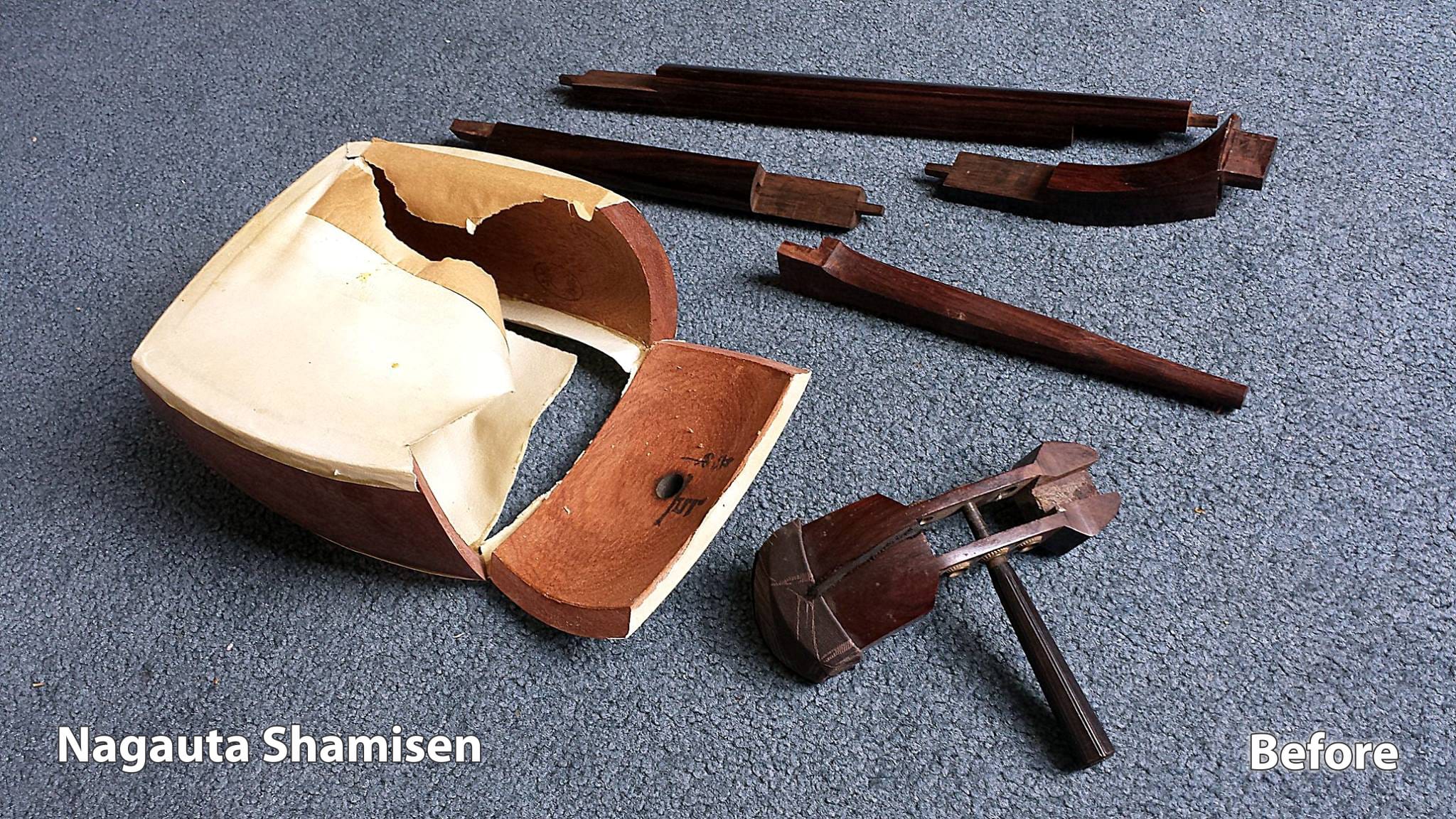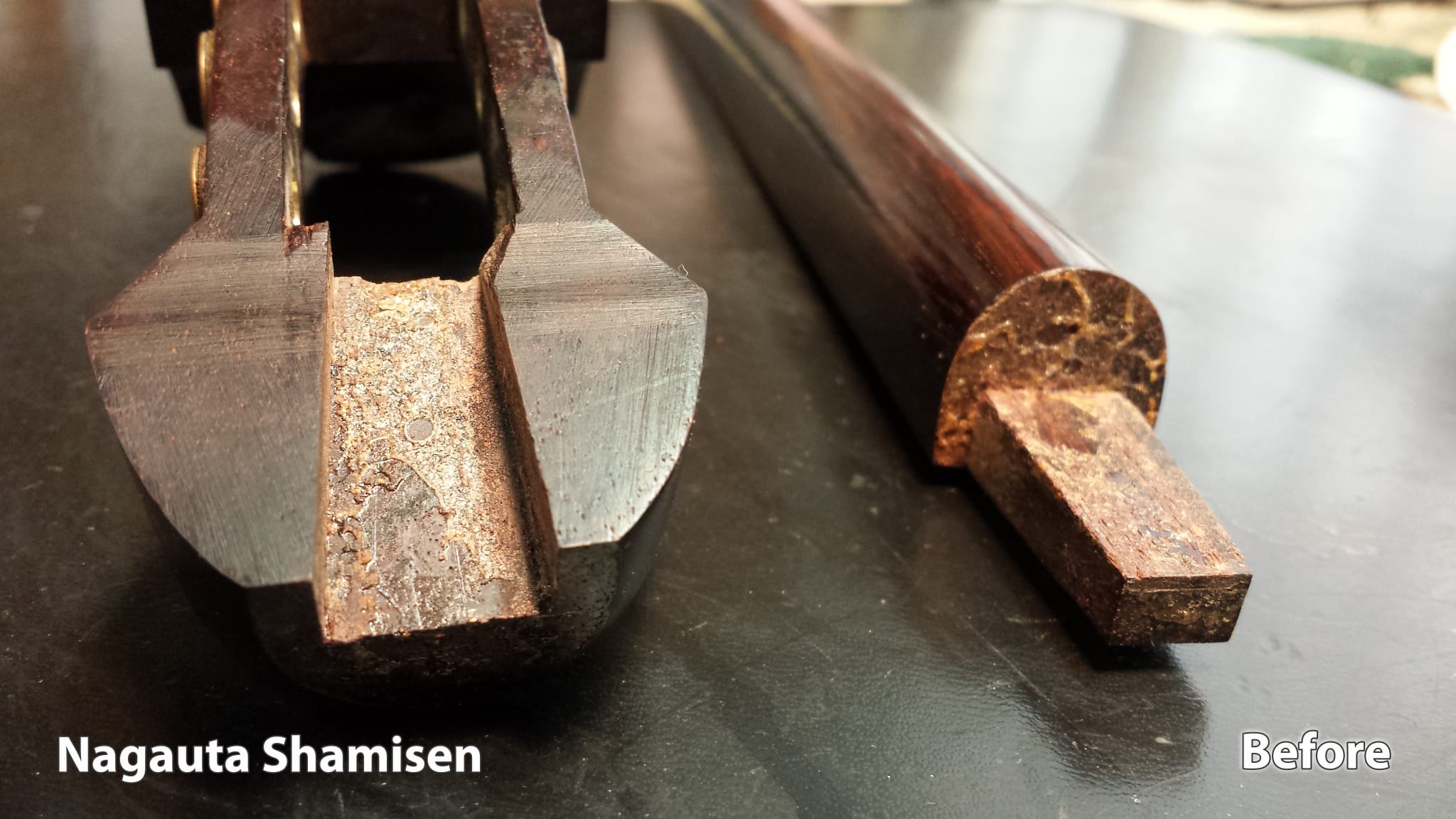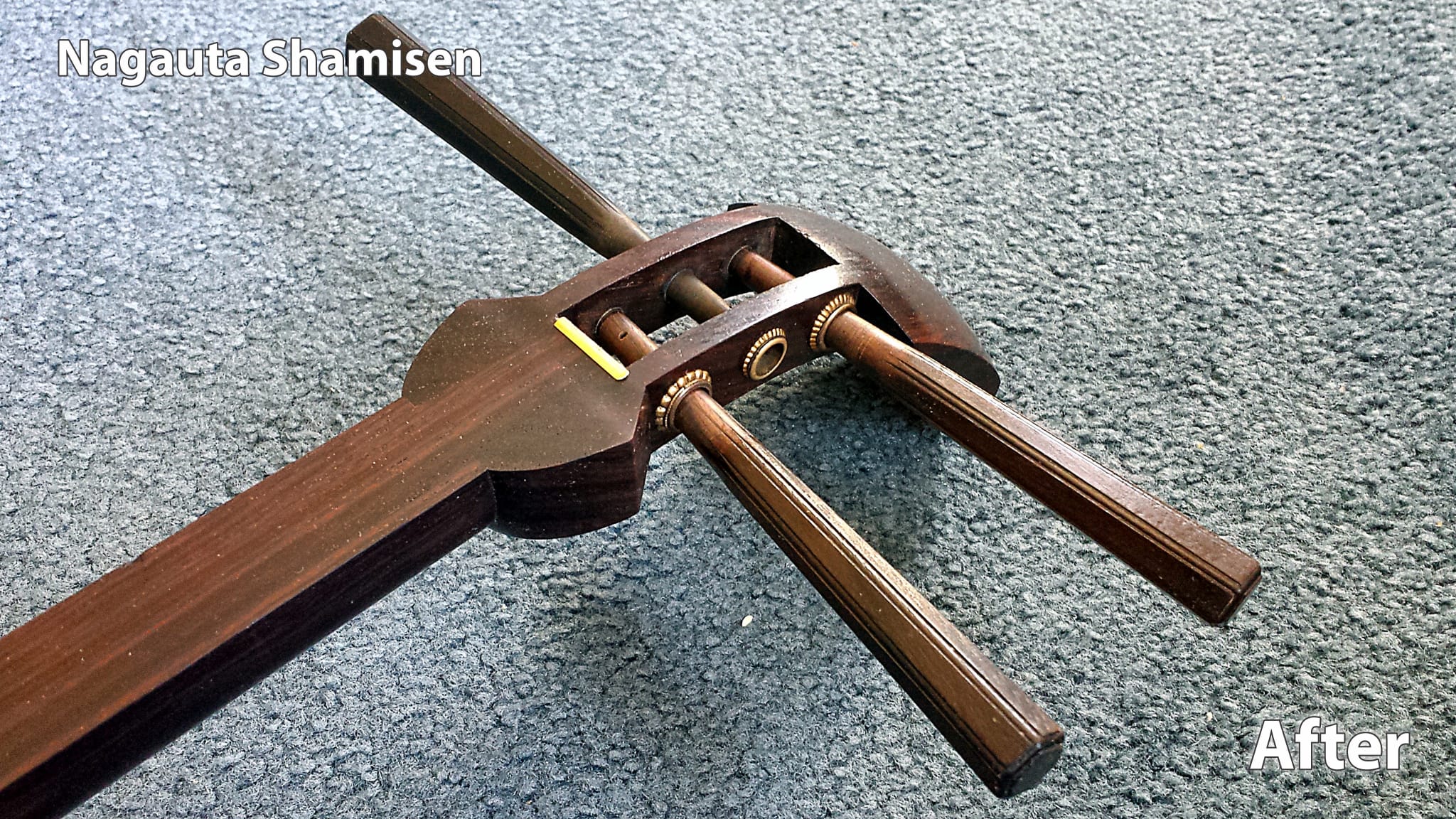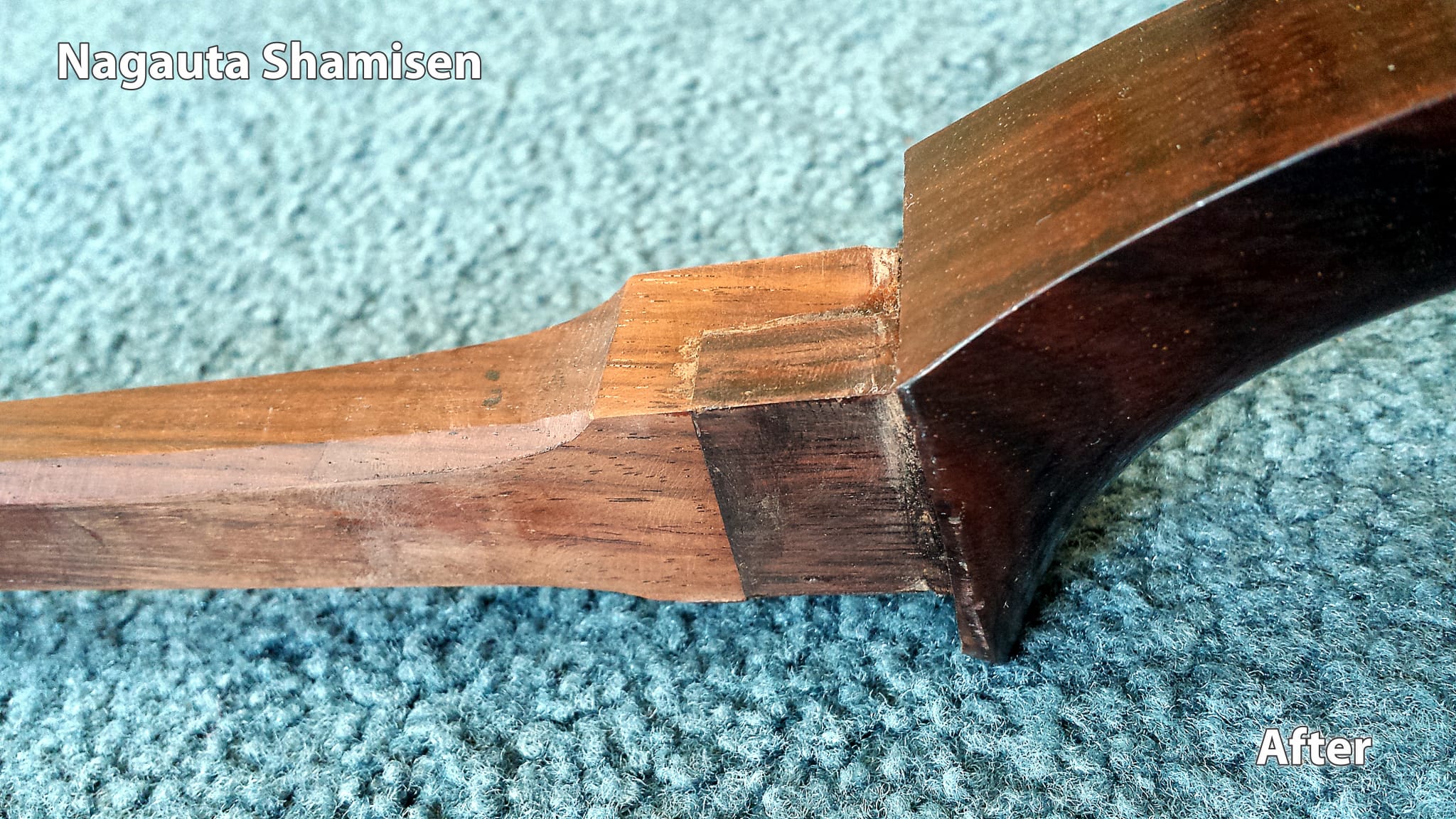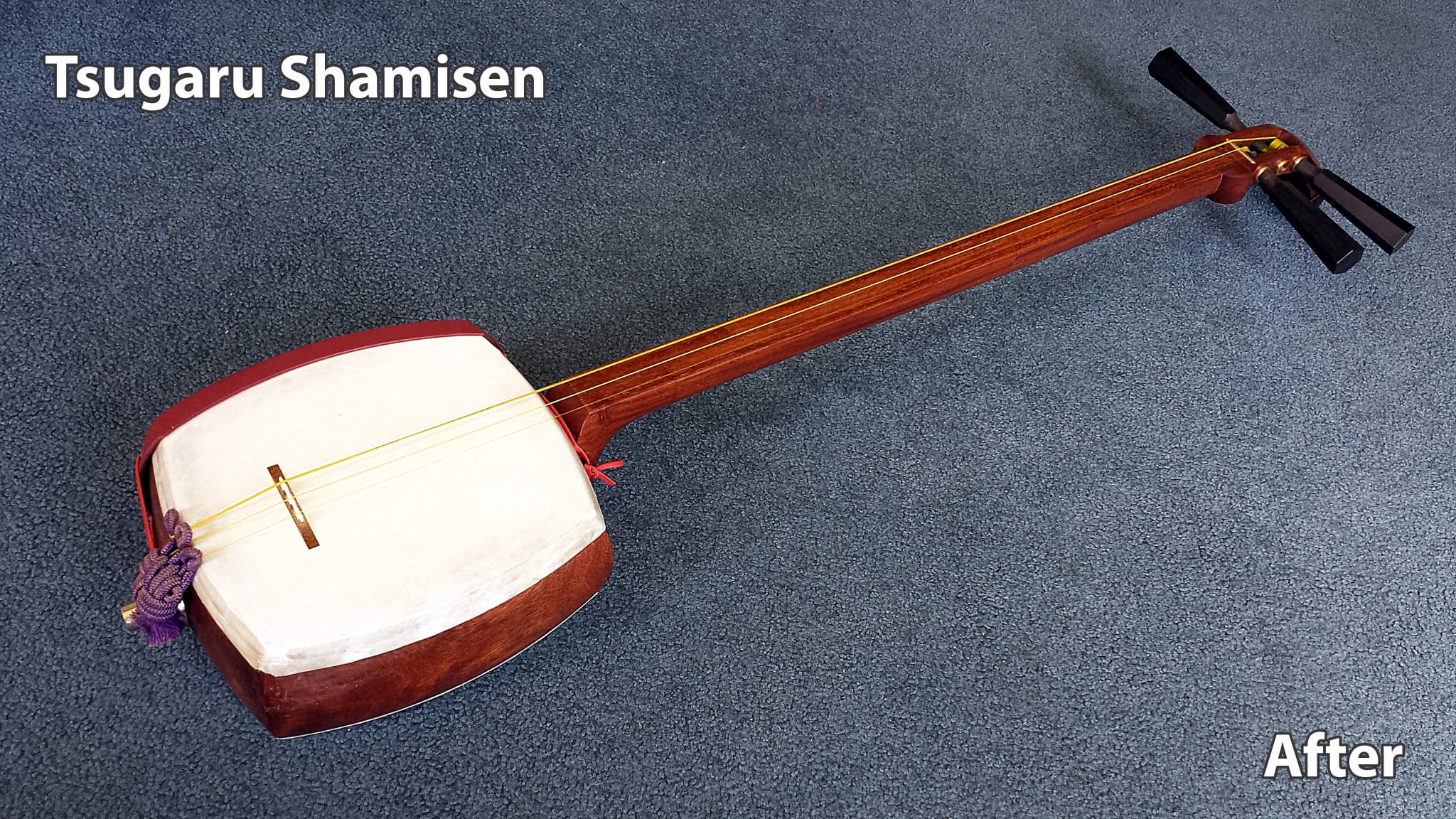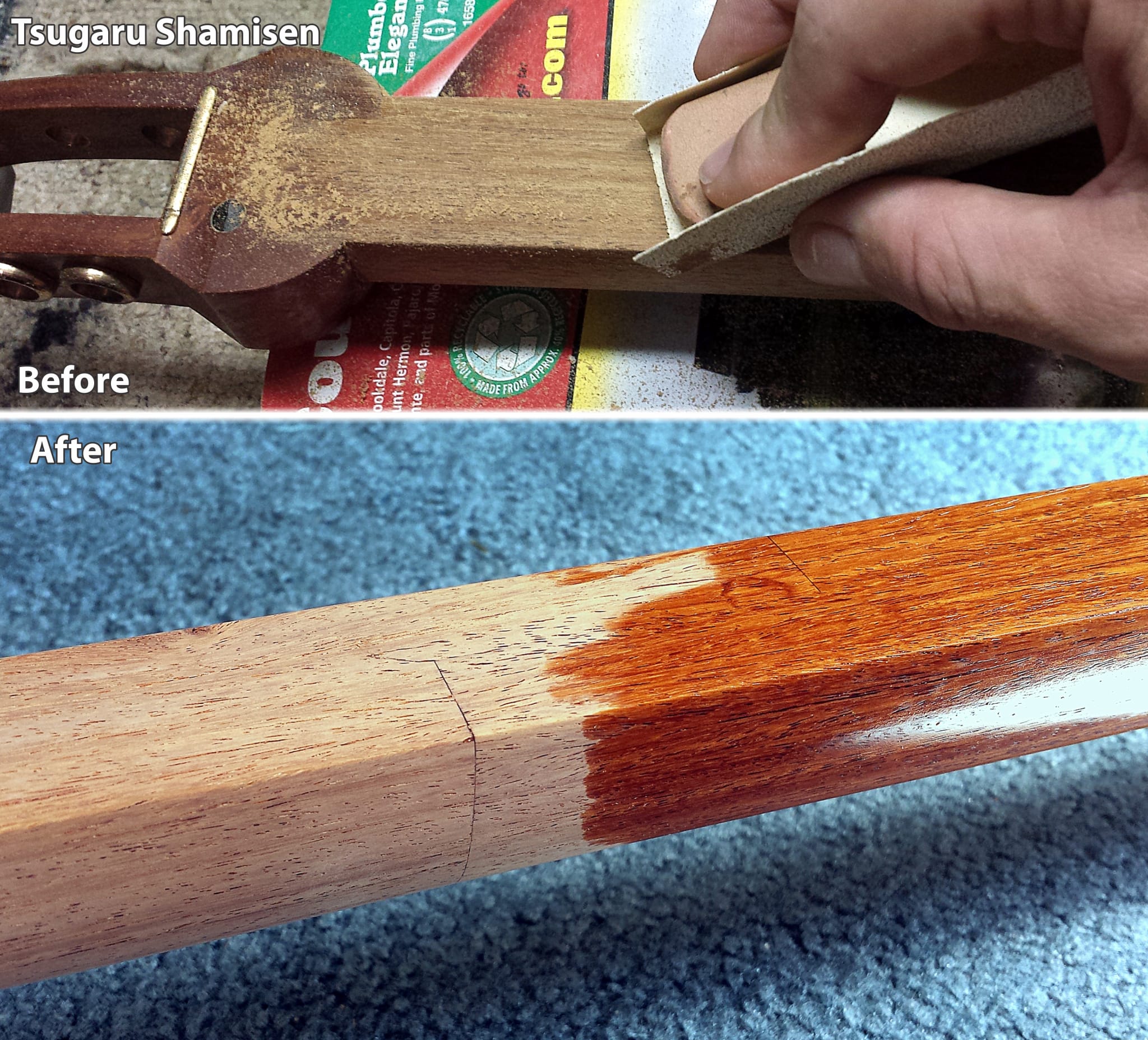Do you have a friend or family member with an antique shamisen sitting broken and dusty in the closet? Is your own shamisen in such disrepair, it’s unplayable? Even though a shamisen is broken into many pieces, often it can be restored to a shiny and like-new condition.
The wonders of restoration
Since 2006, Kyle Abbott has built five shamisen by hand, and has repaired many more. Take a look at two shamisen, both arrived at Bachido HQ with a ruptured skin and broken joints. With careful work, Kyle restored them to new condition with a fresh, resonant tone!
Estimated Costs for Common Shamisen Repairs
(Note: Cost varies depending on extent of damage, and if replacement parts need to be ordered from Japan)
- Regluing broken joints (tenjin, dou, sao): $25~$99
Shamisen built in the last century were often assembled with water-soluble hide glue. As they age, the glue starts to degrade and the pieces of the shamisen break at their joints. Often, the joints are still in great condition (unless warping has occurred). The old glue needs to be carefully sanded down to bare wood for fresh glue to be applied and the joints reattached. - Reskinning: $120 (per side)
Ruptured skin is the most common reason why so many vintage shamisen are left in a closet. The high cost of sending a shamisen to be reskinned in Japan leads people to quit their shamisen journey. Kyle reskins them in California, using goat skin specially prepared for shamisen. - Itomaki Fitting: $30 (per Itomaki)
The itomaki (tuning pegs) initially fit tight, but years of use will wear down the wood and cause them to slip easily. Fortunately, itomaki are made longer so the wood can be reshaped to fit snugly in the holes again. To do this, a fine amount of wood must be carefully removed to ensure smooth turning and even friction. Note: If this repair was repeatedly done before, new itomaki may be required. - Kanberi (sao replaning): $299
When a shamisen has been played extensively for many years, the top surface of the sao will wear away from constant rubbing of the strings and fingers. When the sao gets so worn that unintended buzzing (not from the sawari) occurs when you press the strings and play, it may be time to replane your sao with a process called Kanberi. Through this time-intensive process, the neck is carefully leveled to a smooth surface with great care to maintain the unique concavity of professional sao.
Want your shamisen repaired? Here’s what to do!
- Write a list of requested repairs.
- Take pictures of the parts you wish to be repaired (clear and focused, please!)
- Please send those pictures and list of requests in a friendly message to store (at) bachido (dot) com.
- Kyle Abbott will look at the list and pictures, and respond with an explanation of the required work, along with an estimate.
Note: Often, the glue of antique shamisen disintegrate, which may cause a separate part of the shamisen to break during repair (most often, the soundbox). Precautions are taken to ensure this doesn’t happen, but there is always the likelihood of further repair required.
When Kyle views the pictures you’ve included and suspects further repairs required, he will inform you and explain via email.
Your consent is mandatory!
Kyle will perform the work agreed upon in the email. Upon receiving the shamisen, if he finds other areas which he thinks should be repaired, or parts unexpectedly break (due to the shamisen’s age), he will inform you and ask if you’d like him to fix it (with costs included) No added work will be done or charged for without your approval. If you decline further repairs, he will only repair the parts initially agreed upon.
If you have a shamisen you’d like professionally repaired, please send an email to store (at) bachido (dot) com

